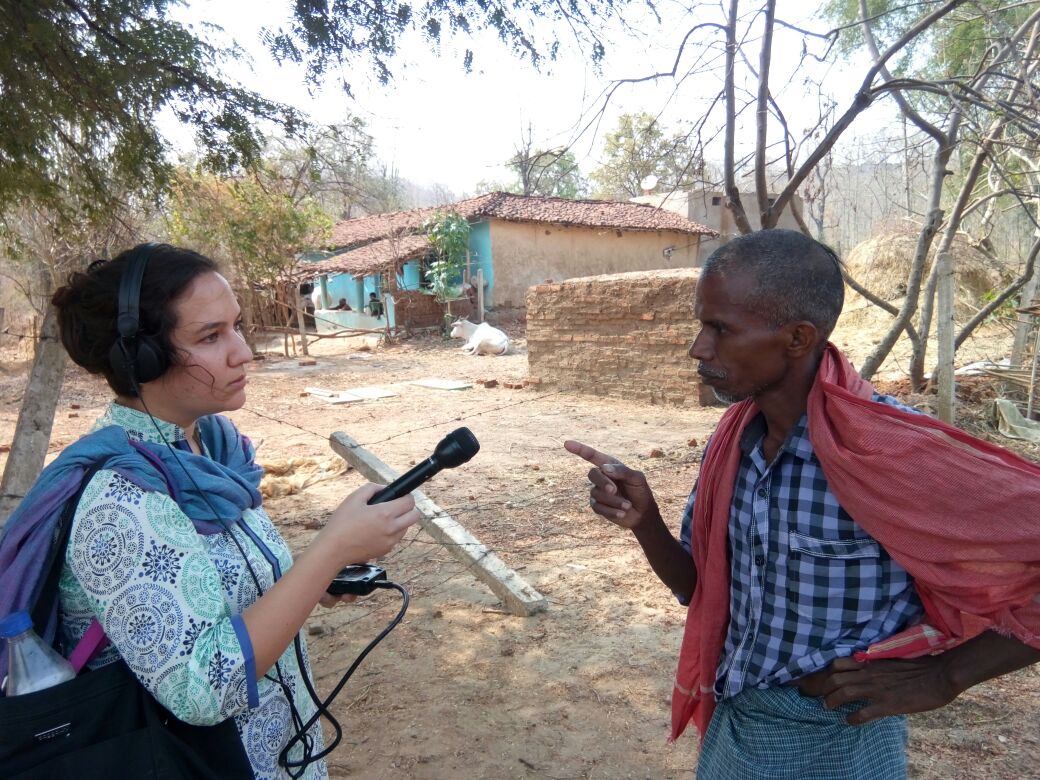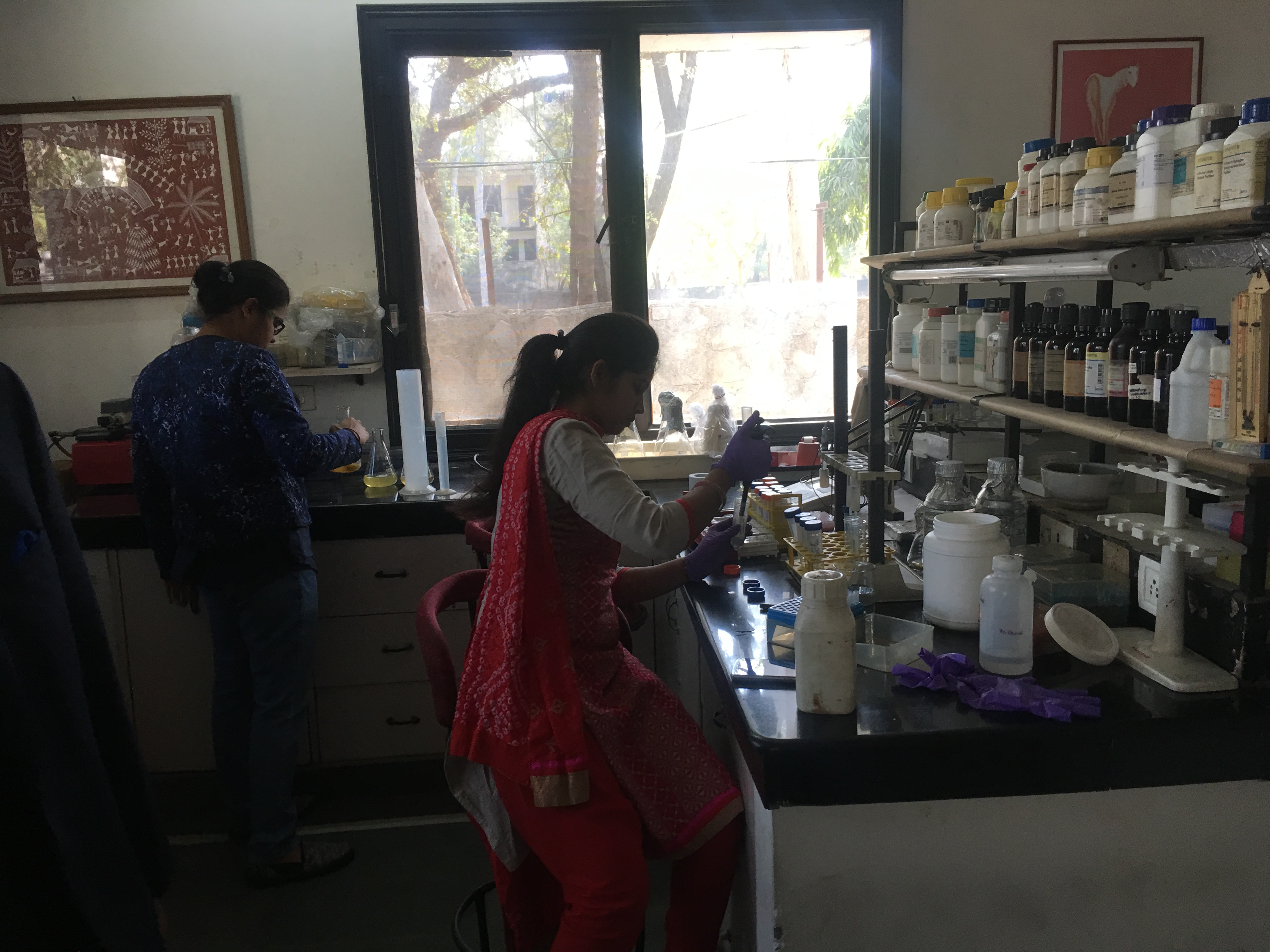
Breaking the Cycle is three-part series from How We Get To Next.
Click here to read Part 1: The Legacy of India's Quest to Sterilize Millions of Men and Part 2: How Researchers in India Are Helping Couples Talk About Family Planning.
For decades, female sterilization has been the most popular form of contraception in India — and it remains so today. A variety of forces work to keep tubectomies common. Throughout the 20th century and into the 21st, international organizations like the UN and powerful foreign governments — especially the United States — have used money and political clout to encourage the Indian government to incentivize sterilization. The Indian government, in turn, has spent decades devoting more resources to pushing sterilization than it has to cultivating other methods.
As female sterilization has become the go-to method across India, many communities and families have come to view it as the only socially acceptable contraceptive, thus ensuring its continued popularity. But female sterilization doesn't allow women to space their pregnancies — often women are encouraged to have as many children as possible before undergoing the procedure, which can put stress on their bodies as well as on families that must raise large numbers of young children.
Other female contraceptive methods face their own challenges in India. Health care workers aren't always trained when it comes to promoting contraceptive pills, which require consistent correct usage, and access to a regular supply is a challenge in some rural areas. Intrauterine devices, or IUDs, do not always stay in place — another problem in places where health care centers are difficult to reach. And some members of the Indian women's movement oppose injectable, long-acting contraceptives, because they are difficult to reverse and could even be administered without the patient's knowledge.
The only medical contraceptive methods available to men (in India or anywhere else) are condoms and male sterilization, both of which Indians generally reject. Four decades after millions of men received vasectomies — sometimes against their will — during the period of Indian history referred to as the Emergency, today only .3 percent of Indian men choose to undergo the procedure. Men might refuse these methods because they believe that condoms reduce pleasure, or that sterilization could compromise their sense of manhood. But other family members might discourage condom use as well, sometimes because they consider them "dirty," and multiple experts I spoke with said that women were often unwilling to allow their husbands to get a voluntary surgical procedure, and would prefer to get sterilized themselves.
Across the world, contraceptive technologies have been stuck in a sort of stasis for decades, and even as existing methods have improved over the years, their fundamental flaws have not gone away. In India, researchers are trying to develop new technologies that would work for more Indians, but they are grappling with a domestic and international climate that is resistant to devoting resources to new ideas. Indian attitudes towards family planning are changing — but can contraceptive methods evolve to meet them?
A 1976 article in Science News lamented that "in spite of a wide range of contraceptives on the market the ideal method of birth control remains to be found." The array of options listed is one that remains largely unchanged today:
Tubal ligation and vasectomies are 100 percent effective, but largely irreversible. Oral contraceptives and intrauterine devices are almost 100 percent effective, but are being linked with an increasing number of health hazards. Condoms, diaphragms, foams, rhythm and coitus interruptus have few health drawbacks, but are not always effective. They also are either aesthetically unsatisfactory, a bother to apply or require the utmost in physical restraint at certain times of the month or during intercourse.
In the past four decades, researchers have developed more long-acting hormonal methods, but these share a large number of the potential "health hazards" associated with oral hormonal contraceptives. Each basic form of contraception currently in use — IUDs, hormonal contraceptives, barrier methods, spermicides, sterilization, and fertility tracking — has been available to consumers for at least half a century. All have been dogged by the same problems throughout their existence: hormonal contraceptives can cause blood clots and negatively affect libido and mood; IUDs are associated with breakthrough bleeding and pelvic inflammatory disease; sterilization is not always possible to reverse, and the reversal procedure is unavailable in many areas. Barrier methods, spermicides, and fertility tracking require continued effort and are less effective than more invasive methods.
In part because of issues like these, many women don't use any contraception at all — even in richer countries where all of these methods are available to most of the population. According to the Guttmacher Institute, 43 million American women are at risk of an unintended pregnancy. In countries like India, where many women lack regular health care access and education, that number becomes much higher; the contraceptive prevalence rate in India is 53 percent, compared to 72 percent in the U.S.
There is global demand for a wider range of contraceptives, but the medical community and pharmaceutical industry have spent the past 50 years simply retooling and re-creating older methods, or — as with the hormonal IUD — combining two different existing methods. These innovations have greatly improved the choices available, but they haven't eradicated the problems we've been aware of since the 1970s.
In this international climate, it's hard for any researchers to break through the stagnant global contraceptive conversation. But in India — where sterilization remains overwhelmingly popular, and many couples are only recently beginning to openly discuss and negotiate family planning — two scientists have been working to bring truly innovative contraceptive methods to market. Each man has devoted the better part of his adult life to creating contraceptives that overcome current methods' shortcomings for Indian users — side effects, irreversibility, and logistical hurdles like travel, training, and supply shortages.
G. P. Talwar, who is 92 years old, is a vaccination specialist. He's best-known for inventing a vaccine to help prevent leprosy. Talwar became interested in birth control early in his career, when he began working in Uttar Pradesh, one of the poorest states in India. He witnessed poverty there unlike any he'd seen before. "I used to see people who had very nice features, very nice people but very emaciated . . . stunted versions of the people they could be," he tells me on a spring day at the lab he built across from his home on the outskirts of South Delhi.
He learned that the farmers there were unable to feed their large families but didn't use contraceptives because there were none they found suitable. So in the 1970s, he set out to find a solution with fewer drawbacks, and came up with a vaccine against human chorionic gonadotropin, or hCG — the same hormone that pregnancy tests detect. HCG only appears in women's bodies when an egg has been fertilized. (The chemical helps the egg implant in the uterus.) Talwar has theorized that if a contraceptive method involves vaccination against a hormone that's only present in women's bodies when pregnancy begins, there will be fewer side effects than exist with the birth control pill, which consistently disrupts hormonal balances, or with the IUD, which must remain implanted in women's bodies.
Talwar worries about the health consequences of current methods for Indian women. While the Indian government has recently begun to promote IUDs more aggressively, he thinks the extra bleeding they cause might be a deal-breaker. "Indian women are anemic, and they cannot tolerate the bleeding, so IUD is [inserted and removed] constantly," he tells me. It's true that Indian women are more prone to anemia than any other women in the world, and that breakthrough bleeding (bleeding between cycles) is a common side effect of IUDs, especially soon after insertion. The hCG vaccine would require only occasional visits to the doctor, and if necessary, women would be able to hide their contraceptive use from their husbands and families.
But both the Indian government and the medical establishment have given Indians ample reason to distrust them. The discretion Talwar's vaccine could allow is the same thing that has led to objections from women's rights activists, who fear that injectable contraceptives could be administered coercively, or without patients' knowledge. Some also worry that a vaccine could create the perception that pregnancy is a disease. This tension between researchers and activists shows how a history of coercive practices can ultimately hinder technological practice.
Though the World Health Organization funded Talwar's early research, they eventually parted ways with him. The WHO criticized Talwar for failing to complete enough animal tests before moving on to humans, though the organization had not yet established guidelines for animal testing. Talwar was also criticized for not giving his trial subjects sufficient informed consent — although, again, there were not yet WHO guidelines on this, and many current contraceptives are based on older research carried out far below these standards — including the trials that led to the first contraceptive pills, conducted by American scientists on Puerto Rican women.
Talwar abandoned the hCG vaccine research in the 1990s, but he revived it again when he was well into his eighties, building a laboratory next to his home. When I visit the lab, a group of postgraduate women are preparing a version of the vaccine for human subjects; the team is now gathering volunteers for phase II trials. Talwar tells me that he hopes the vaccine will become available before he dies — but he also doesn't count on it.
Somewhat notoriously, Sujoy Guha has spend decades working on a reversible, injectable male contraceptive. Guha, who is 77 years old, shares some of Talwar's objections to the current contraceptives available in India. When he began this project, he wanted to create a method that was reversible, less invasive than vasectomy, and less likely to cause side effects than the contraceptive methods available to women.
RISUG — an acronym for "reversible inhibition of sperm under guidance" — is a gel that is injected into a male patient's vas deferens, reversing the charge of the sperm and rendering it immobile. If the patient wants to stop RISUG's contraceptive effects, another injection can break down the gel and make him fertile once again. Guha says that he was able to think of such a unique contraceptive solution because he wasn't part of the medical community to begin with: when he invented RISUG, he had a degree in engineering from IIT Kharagpur, one of India's oldest institutes of technology, as well as a PhD in medical physiology from the University of Illinois.
While Guha was studying in Illinois, a device he invented for pumping blood attracted the attention of a professor, who pointed out his gift for engineering the body. Like Talwar, Guha saw a lack of good contraceptive options as one of the major problems with Indian society, and he thought that by discovering the first reversible male contraceptive he would be able to make a name for himself. His background in biomedical engineering helped him think about the body in terms of positive and negative charges, rather than hormones.
Guha's initial distance from the medical community may have also helped him to see contraceptive possibility in the male body. As Nelly Oudshoorn writes in her book The Male Pill,
Path dependence in the field of contraceptive technology and reproductive biology [in the 1970s] had created a situation in which the basic knowledge of male reproductive biology, the expertise and techniques needed to synthesize male contraceptive drugs, and the infrastructure for clinical testing of any new male contraceptive technologies had remained largely unexplored, underdeveloped, and marginal.
Guha struggled to get the medical community to take his idea seriously, likely due, in part, to his unconventional educational background. In India, he says, people thought that the fact he had degrees in two different specialties showed that he didn't have a "balanced mind"; he eventually removed references to his PhD from his résumé in order to get a job. Even after he invented RISUG and began the first animal trials, the medical community dismissed him. "They tried to brush me off," he says, because he didn't have an MD. He went back to earn a third degree, in medicine, just so he could proceed with his invention.
As Oudshoorn notes, the idea that men are reproductive beings has long been scorned in the medical community. "Even in the 1990s male contraceptive research had a negative image," she writes. In 1994, the UN-coordinated International Conference on Population and Development in Cairo declared that contraceptive education and choices were essential for women to be able to move upward in society. But major international gestures and resolutions like this one have uniformly failed to include the possibility that male contraceptives could also alleviate women's contraceptive burden.
Large international pharmaceutical corporations have shown no interest in funding research for male contraceptives, either. Experts have speculated that these companies fear that such contraceptives could disrupt the demand for female contraceptives already on the market, which they can continue to sell without having to pay for research costs.
Like Talwar's contraceptive vaccine, RISUG seems closer than ever to being available — but it's still encountering substantial hurdles. Phase III clinical trials on human subjects were successfully completed in the summer of 2017 — the drug proved over 99 percent effective — but Guha is still awaiting clearance from the Indian Drug Controller General for the next round of research. He is now planning a phase IIIb trial, which would involve testing the viability of the drug in rural health centers. "At present, all the injections have been given by doctors in hospitals in major cities," he tells me. The tests planned for IIIb would ascertain whether RISUG fits the needs of a specific community.
Guha is fatalistic about whether he'll see RISUG become widely available in his lifetime. "In life, one cannot do a lot of planning," he says. "There are so many uncertainties. . . . One has to accept this stream of life . . . things move within the whole system, and when some things move very fast over here, some things move very slow."
Among health researchers, Guha and Talwar are relatively unique in their desire to design contraceptives that fit the needs of specific groups of people. Going against the grain has meant that their projects have progressed enormously slowly; both men are well past the age that most people stop working. While both claim to have "retired," they both go to a lab nearly every day.
And though both Talwar and Guha came of age as scientists many decades ago, and are largely unaware of the modern jargon that permeates the world of technology development, they've hit on concepts that organizations are exploring as a new approach to contraceptive technology — "human-centered design." FHI 360's Contraceptive Technology Innovation Initiative takes into account the fact that different technologies are going to have different health impacts on different women, and the fact that women have different contraceptive needs during different periods of their lives.
The hCG vaccine could help a lot of women, but not everyone — it will only work for women with certain blood compositions, since the effectiveness of the method depends on how quickly individuals are able to generate antibodies after being exposed to the vaccine. RISUG has limitations as well: it won't be enough to protect women who aren't in committed relationships. Other reproductive health advocates are looking for ways to resolve the issues with currently available contraceptives. Injectable contraceptives that women can administer themselves, for example, would address the concerns of some women's groups that injectable methods lend themselves too easily to coercion and deception. But to get closer to a reality in which every person who wants contraceptive protection can get it, we need more new methods, not just reworked versions of older ones.
Globally, men have limited contraceptive options, as do people seeking non-hormonal birth control. Drug companies are invested in maintaining the contraceptive status quo, but that could change with a wider range of contraceptives that appeal to different populations. While RISUG and the hCG vaccine were both designed with Indians in mind, they could improve the lives of men and women in other parts of the world, too. If one or both of these innovations become available in India and are distributed to people who actively want them and are fully aware of how the methods work, we'll be able to see how outcomes change when people willingly—and without coercion or institutional pressure—use contraceptives that are specifically designed for them.

Education Resource
Meet the Journalist: Hannah Harris Green
Hannah Harris Green discusses her reporting project, "The Future of Family Planning in India," and...
- View this story on Quartz



